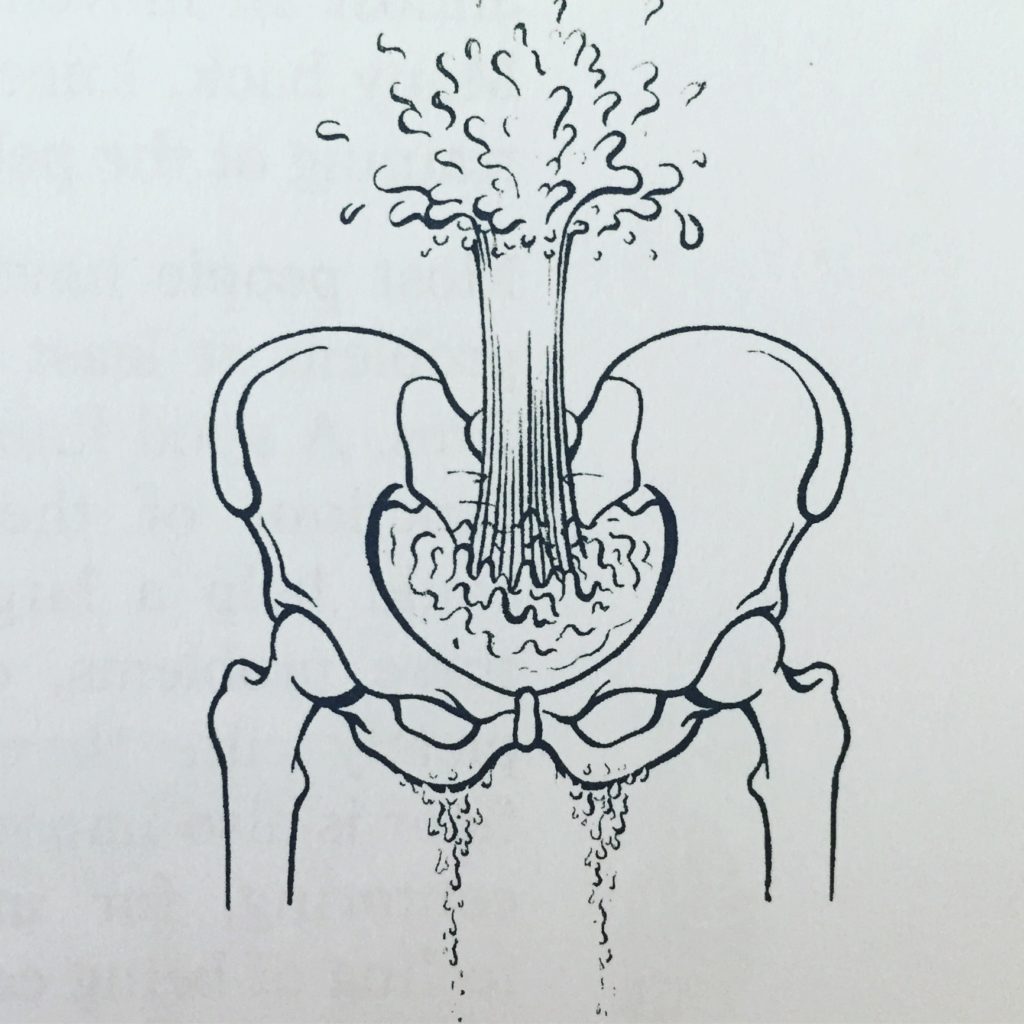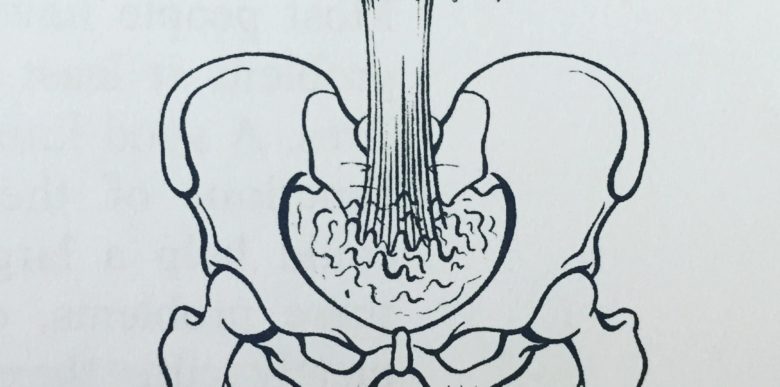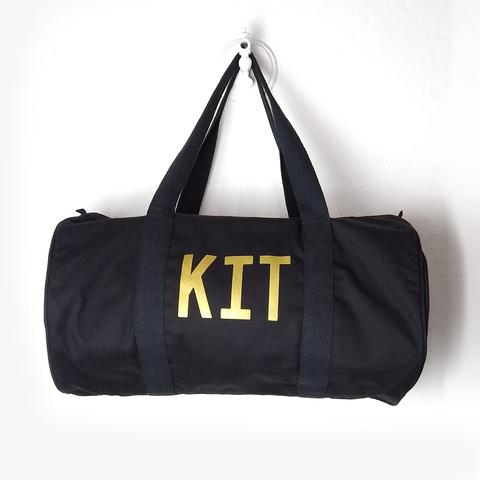Pelvic Paw Patrol: Your rapid response team
1
We are incredible beings, female human beings. Our pelvises are a work of art and the muscles that hammock the pelvic cavity, the pelvic floor, form a strict turnstile for your pelvic organs, waste products and any babies in residence, like crowd control at a football ground to stay peaceful and controlled and not spilling out when they shouldn’t. This turnstile is your last line of defence, working in conjunction with a team of dedicated stewards: your pelvic ligaments, layers of abdominal muscles, your diaphragm and spinal muscles, to ensure the
SelfishMother.com
2
rowdy internal organs are kept in check. If a member of the team is compromised in any way there can be too much pressure spilling onto the exit, which could cause mayhem within the grounds.
Damage to the turnstile puts more emphasis on the rest of the team doing their roles properly. But if they haven’t had adequate training or they are also in poor health…well, you can imagine the results.
Think of your body as a team of systems and strategies in place to protect you and provide crowd control. Inform yourself about these systems – they work
SelfishMother.com
3
together. There isn’t really such a thing as isolated ”pelvic floor exercise” without also looking at breathing and alignment. Diastasis recti has an implication for pelvic floor dysfunction and back/pelvic pain. If you’ve had a baby, chances are you’ve experienced some degree of abdominal separation – it’s a natural occurrence. What’s sometimes not natural is the return of abdominal integrity – especially if we make it worse with boot camp crunches in the quest for your ”pre-baby flat tummy”. Too many women who I have taught postnatal Pilates
SelfishMother.com
4
or interviewed for my books have told me stories about pain and inadequate treatment after birth. It makes me sad and angry. One woman felt she was told she was healing rather than asked what she actually felt…we then fall into a meek silence that maybe we don’t know as much as the health professional.
Don’t suffer in silence. Listen to your body, and speak up for it. It’s the only one you get. It loves you.
You’re told to “exercise” your pelvic floor, you know it’s there…but it’s a little bit intangible and ethereal. We tend to
SelfishMother.com
5
clench our teeth, raise our eyebrows and squeeze hopefully, not he vague advice of the midwife or health visitor. What does the pelvic floor actually do? How should it feel? How do I know if I’m doing it right? Pelvic floor awareness is the most important thing to discover and fine-tune. Yes we need to strengthen, but we also need to have the ability to release and be flexible. And, above all, you need to BREATHE, fully and deeply. Pelvic floor exercises without attention to the breath are basically null and void.
We need to be aware and be able to
SelfishMother.com
6
control the pelvic floor muscles, rather than simply make them “strong”. Imagine an accordion: if it was squeezed up tight permanently it wouldn’t be able to open, close, undulate and make beautiful music.
Pelvic Floor Awareness
The diaphragm and pelvic floor muscles descend as you breathe in, and naturally lift as you breathe out. So when you’re doing anything that requires exertion: picking your baby out of their cot, putting your toddler in their car seat, try to start doing it consciously on an out breath, to help your pelvic floor rather
SelfishMother.com
7
than strain it further.
On an out breath, softly lift your back passage, as if you’re trying to stop breaking wind. Continue this lifting energy and bring it to the front, towards your pubic bone as if you’re trying to stop the flow of pee. Draw these muscles up and in, lifting from the back forward and up. We want to try and locate the full breadth of the muscles from the back to the front, imagine like flower petals folding up and into a bud, evenly from all sides. You may feel your lower belly lifting up as well.
Maintaining this
SelfishMother.com
8
engagement, breathe. Ensure that you can still breathe fully and wide into the sides of the ribcage, while continuing to lift into your centre. There should be no bracing.
Release on an in breath.
Scan your body for any tension as you breathe: shoulders, jaw, neck, bum – soft and relaxed.
If you lose your connection, that’s totally normal so don’t feel frustrated, simply take a breath and start again. With practice, it will become easier and more natural.
The key is a soft engagement rather than a stiff fixed one. Make sure that you
SelfishMother.com
9
can still breathe, and your torso isn’t rigid.
Please don’t practise this while sitting on the loo and stop midflow while actually having a pee. You might introduce the chance of a UTI that way.
Help! I can’t feel it
If you really can’t find your pelvic floor at all: try sucking your thumb. Or, place both hands palms down on a table while you’re sitting down. Press down on the table, this triggers a natural lift of the pelvic floor muscles. Persevere with these pelvic floor awareness exercises, and you should begin to find the mental
SelfishMother.com
10
connection which will allow you to feel them – it’s a subtle sensation, not “obvious” like tensing your bicep muscles, so it may simply be that you need to find that mindful connection to your body, and relax into it a bit. Also try getting stuck in with your hands to actually find where the muscle attaches: feel your sit bones with your fingers, trace your fingers around your pelvis and imagine the pelvic floor as a hammock spanning the whole pelvic cavity. Having a tactile approach while you experiment with finding your centre may help you to
SelfishMother.com
11
connect to the engagement.
If you still struggle after giving it a real go (it will take a bit of regular practice) – and particularly if this is not your first baby and you’ve found pelvic floor sensation tricky since your previous birth – it’s worth going to a women’s health physio to see if a hands-on practitioner can give you some pointers.
Pelvic floor, deep belly breathing
In our society we’re conditioned to hold our bellies in – you know you do it, when you’re having a photo taken, or when you’re reminded of
SelfishMother.com
12
your posture we just suck our tummies in tight. Often all this does is lead to a lot of tension around the abdominals and pelvic floor and temporarily push your internal organs up and in, rather than creating any useful strength or muscle balance. Being pregnant can be a tricky emotional time letting go of your semblance of control of your tummy and its (sometimes alarmingly overnight) growth in size. This exercise allows you to connect to your belly through your breath, and fully relax all of the muscles around your abdomen and your pelvic floor. It’s
SelfishMother.com
13
a wonderful way of calming body and mind, so it’s perfect for all stages of pregnancy (for late pregnancy, sitting up bolstered by pillows may be a better position).
It’s a great way of preparing for your labour or caesarean birth, you can tap into this calming meditative state, and use the breathing to soothe yourself at any time you need to.
Settle comfortably with your eyes closed, release the weight of your body into the floor underneath you.
Bring your awareness to your breath. Initially, just notice it, without changing it. Notice
SelfishMother.com
14
the in breath, the out breath, the space in between. Notice whether there is a rhythm, a consistent length of in breath versus out breath.
Begin to bring a pattern to your breath. Breathe in through the nose for a count of 7, and out through the mouth for a count of 11. Let the breath sigh out through the lips as if you’re fogging a window in front of you.
Bring your awareness to your belly, and your hands resting there, picture your baby in your belly. If your bump is bigger, notice if your baby is awake, moving, what sensations you can feel
SelfishMother.com
15
internally and externally through the hands.
Breathe in and notice how your hands rise and the belly inflates with the breath.
As you breathe out, notice the fall in your abdomen as the breath recedes.
See whether you can channel your breath deep down towards the belly and pelvis, imagine it like a soft wave travelling down the body and washing away any tension.
On the outbreath, feel the belly soften and imagine the pelvis wide and open, and completely relaxed.
Practise releasing the jaw by changing the sounds of your outbreath.
SelfishMother.com
16
Experiment with a “ssshhhhhhh” sound, or a long audible sigh. If you feel a bit silly doing this, try to just relax into it a bit and remember you’re on your own, no one is watching or judging.
SelfishMother.com
This blog was originally posted on SelfishMother.com - why not sign up & share what's on your mind, too?
Why not write for Selfish Mother, too? You can for free and post immediately.
We regularly share posts on @SelfishMother Instagram and Facebook :)
Anya Hayes - 12 Jan 18
We are incredible beings, female human beings. Our pelvises are a work of art and the muscles that hammock the pelvic cavity, the pelvic floor, form a strict turnstile for your pelvic organs, waste products and any babies in residence, like crowd control at a football ground to stay peaceful and controlled and not spilling out when they shouldn’t. This turnstile is your last line of defence, working in conjunction with a team of dedicated stewards: your pelvic ligaments, layers of abdominal muscles, your diaphragm and spinal muscles, to ensure the rowdy internal organs are kept in check. If a member of the team is compromised in any way there can be too much pressure spilling onto the exit, which could cause mayhem within the grounds.
Damage to the turnstile puts more emphasis on the rest of the team doing their roles properly. But if they haven’t had adequate training or they are also in poor health…well, you can imagine the results.
Think of your body as a team of systems and strategies in place to protect you and provide crowd control. Inform yourself about these systems – they work together. There isn’t really such a thing as isolated “pelvic floor exercise” without also looking at breathing and alignment. Diastasis recti has an implication for pelvic floor dysfunction and back/pelvic pain. If you’ve had a baby, chances are you’ve experienced some degree of abdominal separation – it’s a natural occurrence. What’s sometimes not natural is the return of abdominal integrity – especially if we make it worse with boot camp crunches in the quest for your “pre-baby flat tummy”. Too many women who I have taught postnatal Pilates or interviewed for my books have told me stories about pain and inadequate treatment after birth. It makes me sad and angry. One woman felt she was told she was healing rather than asked what she actually felt…we then fall into a meek silence that maybe we don’t know as much as the health professional.
Don’t suffer in silence. Listen to your body, and speak up for it. It’s the only one you get. It loves you.
You’re told to “exercise” your pelvic floor, you know it’s there…but it’s a little bit intangible and ethereal. We tend to clench our teeth, raise our eyebrows and squeeze hopefully, not he vague advice of the midwife or health visitor. What does the pelvic floor actually do? How should it feel? How do I know if I’m doing it right? Pelvic floor awareness is the most important thing to discover and fine-tune. Yes we need to strengthen, but we also need to have the ability to release and be flexible. And, above all, you need to BREATHE, fully and deeply. Pelvic floor exercises without attention to the breath are basically null and void.
We need to be aware and be able to control the pelvic floor muscles, rather than simply make them “strong”. Imagine an accordion: if it was squeezed up tight permanently it wouldn’t be able to open, close, undulate and make beautiful music.
Pelvic Floor Awareness
The diaphragm and pelvic floor muscles descend as you breathe in, and naturally lift as you breathe out. So when you’re doing anything that requires exertion: picking your baby out of their cot, putting your toddler in their car seat, try to start doing it consciously on an out breath, to help your pelvic floor rather than strain it further.
- On an out breath, softly lift your back passage, as if you’re trying to stop breaking wind. Continue this lifting energy and bring it to the front, towards your pubic bone as if you’re trying to stop the flow of pee. Draw these muscles up and in, lifting from the back forward and up. We want to try and locate the full breadth of the muscles from the back to the front, imagine like flower petals folding up and into a bud, evenly from all sides. You may feel your lower belly lifting up as well.
- Maintaining this engagement, breathe. Ensure that you can still breathe fully and wide into the sides of the ribcage, while continuing to lift into your centre. There should be no bracing.
- Release on an in breath.
- Scan your body for any tension as you breathe: shoulders, jaw, neck, bum – soft and relaxed.
- If you lose your connection, that’s totally normal so don’t feel frustrated, simply take a breath and start again. With practice, it will become easier and more natural.
- The key is a soft engagement rather than a stiff fixed one. Make sure that you can still breathe, and your torso isn’t rigid.
- Please don’t practise this while sitting on the loo and stop midflow while actually having a pee. You might introduce the chance of a UTI that way.
Help! I can’t feel it
If you really can’t find your pelvic floor at all: try sucking your thumb. Or, place both hands palms down on a table while you’re sitting down. Press down on the table, this triggers a natural lift of the pelvic floor muscles. Persevere with these pelvic floor awareness exercises, and you should begin to find the mental connection which will allow you to feel them – it’s a subtle sensation, not “obvious” like tensing your bicep muscles, so it may simply be that you need to find that mindful connection to your body, and relax into it a bit. Also try getting stuck in with your hands to actually find where the muscle attaches: feel your sit bones with your fingers, trace your fingers around your pelvis and imagine the pelvic floor as a hammock spanning the whole pelvic cavity. Having a tactile approach while you experiment with finding your centre may help you to connect to the engagement.
If you still struggle after giving it a real go (it will take a bit of regular practice) – and particularly if this is not your first baby and you’ve found pelvic floor sensation tricky since your previous birth – it’s worth going to a women’s health physio to see if a hands-on practitioner can give you some pointers.
Pelvic floor, deep belly breathing
In our society we’re conditioned to hold our bellies in – you know you do it, when you’re having a photo taken, or when you’re reminded of your posture we just suck our tummies in tight. Often all this does is lead to a lot of tension around the abdominals and pelvic floor and temporarily push your internal organs up and in, rather than creating any useful strength or muscle balance. Being pregnant can be a tricky emotional time letting go of your semblance of control of your tummy and its (sometimes alarmingly overnight) growth in size. This exercise allows you to connect to your belly through your breath, and fully relax all of the muscles around your abdomen and your pelvic floor. It’s a wonderful way of calming body and mind, so it’s perfect for all stages of pregnancy (for late pregnancy, sitting up bolstered by pillows may be a better position).
It’s a great way of preparing for your labour or caesarean birth, you can tap into this calming meditative state, and use the breathing to soothe yourself at any time you need to.
- Settle comfortably with your eyes closed, release the weight of your body into the floor underneath you.
- Bring your awareness to your breath. Initially, just notice it, without changing it. Notice the in breath, the out breath, the space in between. Notice whether there is a rhythm, a consistent length of in breath versus out breath.
- Begin to bring a pattern to your breath. Breathe in through the nose for a count of 7, and out through the mouth for a count of 11. Let the breath sigh out through the lips as if you’re fogging a window in front of you.
- Bring your awareness to your belly, and your hands resting there, picture your baby in your belly. If your bump is bigger, notice if your baby is awake, moving, what sensations you can feel internally and externally through the hands.
- Breathe in and notice how your hands rise and the belly inflates with the breath.
- As you breathe out, notice the fall in your abdomen as the breath recedes.
- See whether you can channel your breath deep down towards the belly and pelvis, imagine it like a soft wave travelling down the body and washing away any tension.
- On the outbreath, feel the belly soften and imagine the pelvis wide and open, and completely relaxed.
- Practise releasing the jaw by changing the sounds of your outbreath. Experiment with a “ssshhhhhhh” sound, or a long audible sigh. If you feel a bit silly doing this, try to just relax into it a bit and remember you’re on your own, no one is watching or judging.
Did you enjoy this post? If so please support the writer: like, share and comment!
Why not , too? You can share posts & events immediately. It's free!
Anya is a Pilates teacher specialising in bumps and mums, and a pregnancy and wellness author and speaker.
She's the author of four books, My Pilates Guru, A Little Course in Pilates, Pregnancy: the Naked Truth, and The Supermum Myth: Overcome anxiety, ditch guilt and embrace imperfection.
Her next book, Pilates for Pregnancy, publishes in 2018.
Anya blogs at motherswellnesstoolkit.wordpress.com, where you'll find tips and information on everything from pelvic floor recovery to mindfulness and meditation, to help you cope better with motherhood's mayhem.
She lives in South east London with her husband and two boys, Maurice, 6, and Freddie, 3, and loves nothing better than a glass of red and a flash of bright lipstick (detracts from a tired eye!).
LIST





















